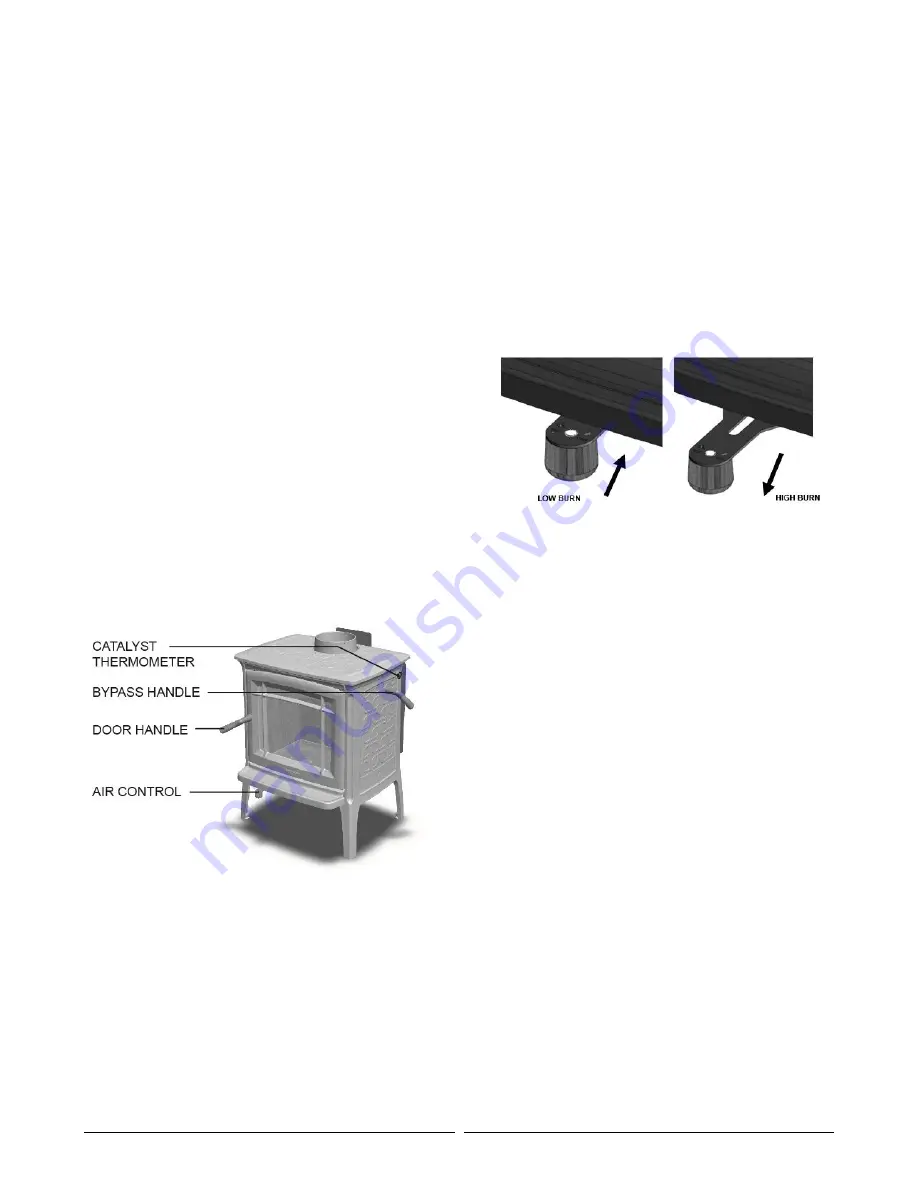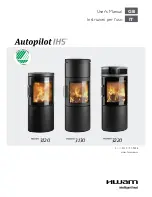
Hearthstone Quality Home Heating Products, Inc
®
Craftsbury (Model 8392)
21
O
PERATION
Once your Craftsbury is installed, you are ready to
light a fire.
Every installation, season’s firewood, and operator’s
technique varies. Learn how to use your stove most
efficiently for your installation. We can give you the
basic principles, but only you can ensure maximizing
the potential of your stove while also operating it
safely.
•
WARNING: HOT WHILE IN OPERATION! KEEP
CHILDREN, PETS, CLOTHING AND FURNITURE
AWAY. CONTACT MAY CAUSE SKIN BURNS.
Read this entire chapter before lighting your first fire.
It explains the controls and features of your wood
stove, how to choose firewood, and how to use your
stove on a daily basis.
C
ONTROLS AND
F
EATURES
Before lighting any fires,
become familiar with the
location and operation of your stove's controls and
features and learn how to use them (
See Figure 10
).
For your own safety, do not modify these features in
any way. We recommend you use fireplace gloves
when the stove is in operation and hot.
Figure 13 - Controls & Features
FRONT DOOR HANDLE:
The firebox door allows
you to load wood into your stove; a wood handle
operates the door. To open the door, pull up on the
handle and swing the door away from the stove. To
latch the door, push the door tightly towards the
firebox then continue to push the handle in and down
until it latches shut. Gently pull on the door handle to
make sure it is properly latched.
PRIMARY AIR CONTROL: The primary air control
lever is located under the ash lip. The primary air
control allows you to regulate the amount of air
entering the firebox. Generally, the more air allowed
into the firebox, the faster the rate of burn and the
higher the heat output; conversely, less air creates a
slower burn, with lower heat output. For maximum
airflow, pull the lever out as far as possible; move the
lever inwards as far as possible for minimum airflow
(does not close completely).
Figure 14
– Air Control
BYPASS HANDLE:
The bypass handle controls the
bypass door inside the stove. When the handle is
pointed towards the front of the stove, the bypass
door is open, and when the handle is pointed
towards the rear of the stove, the bypass door is
closed. The bypass door directs the flow of
combustion products through or around the catalytic
combustor. When the bypass handle is open,
combustion products are directed around the
catalytic combustor. The bypass handle should be
open when first staring a fire until the catalytic
combustor heats up to activation temperature, and
whenever opening the front door to load the stove.
When the bypass handle is closed, combustion
products are directed through the catalytic
combustor. The bypass handle should be closed
once the catalytic combustor heats up to activation
temperature, and remain closed whenever the stove
is burning and in the active temperature range.
















































